Downloaded 97 times

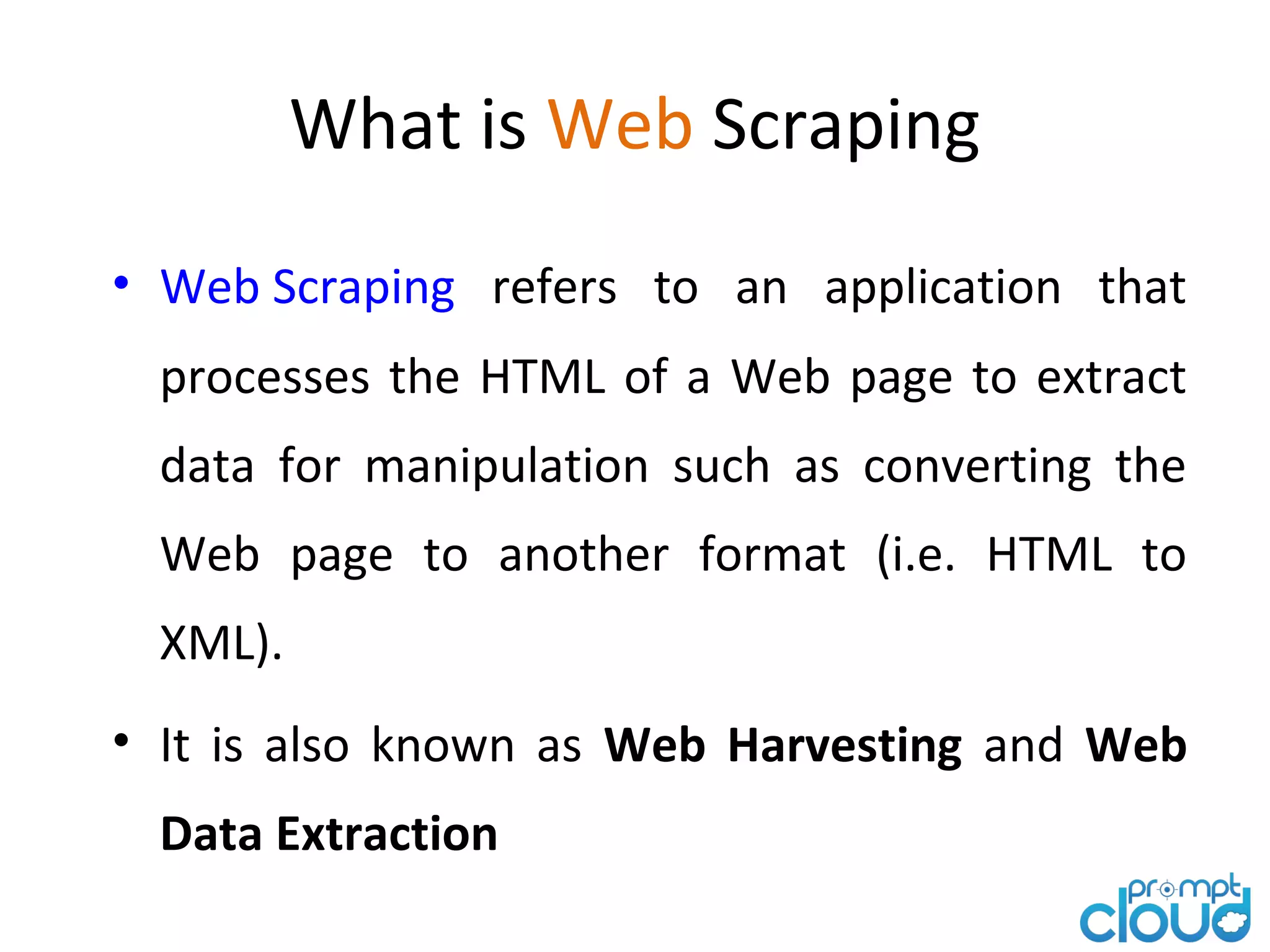


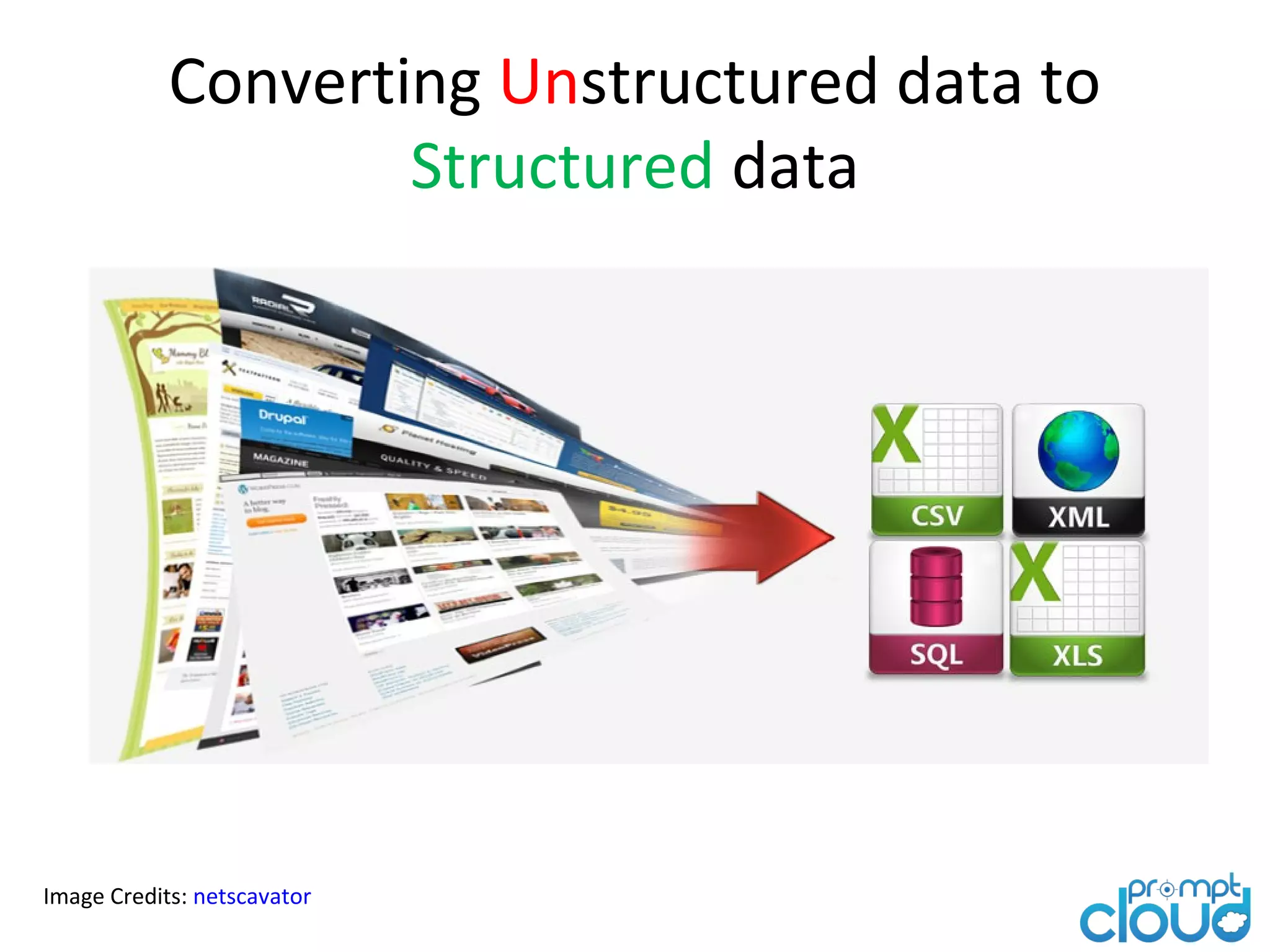
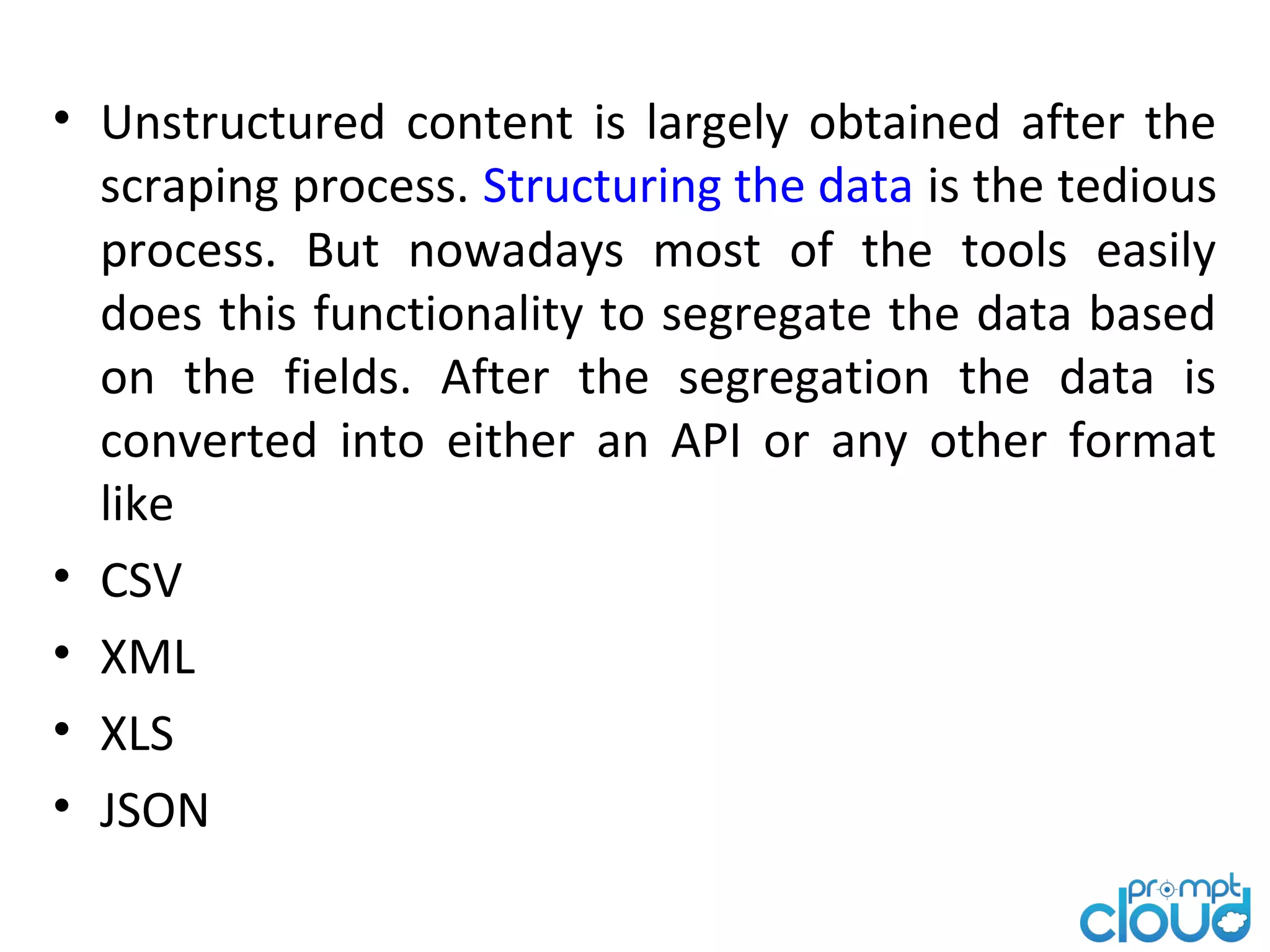
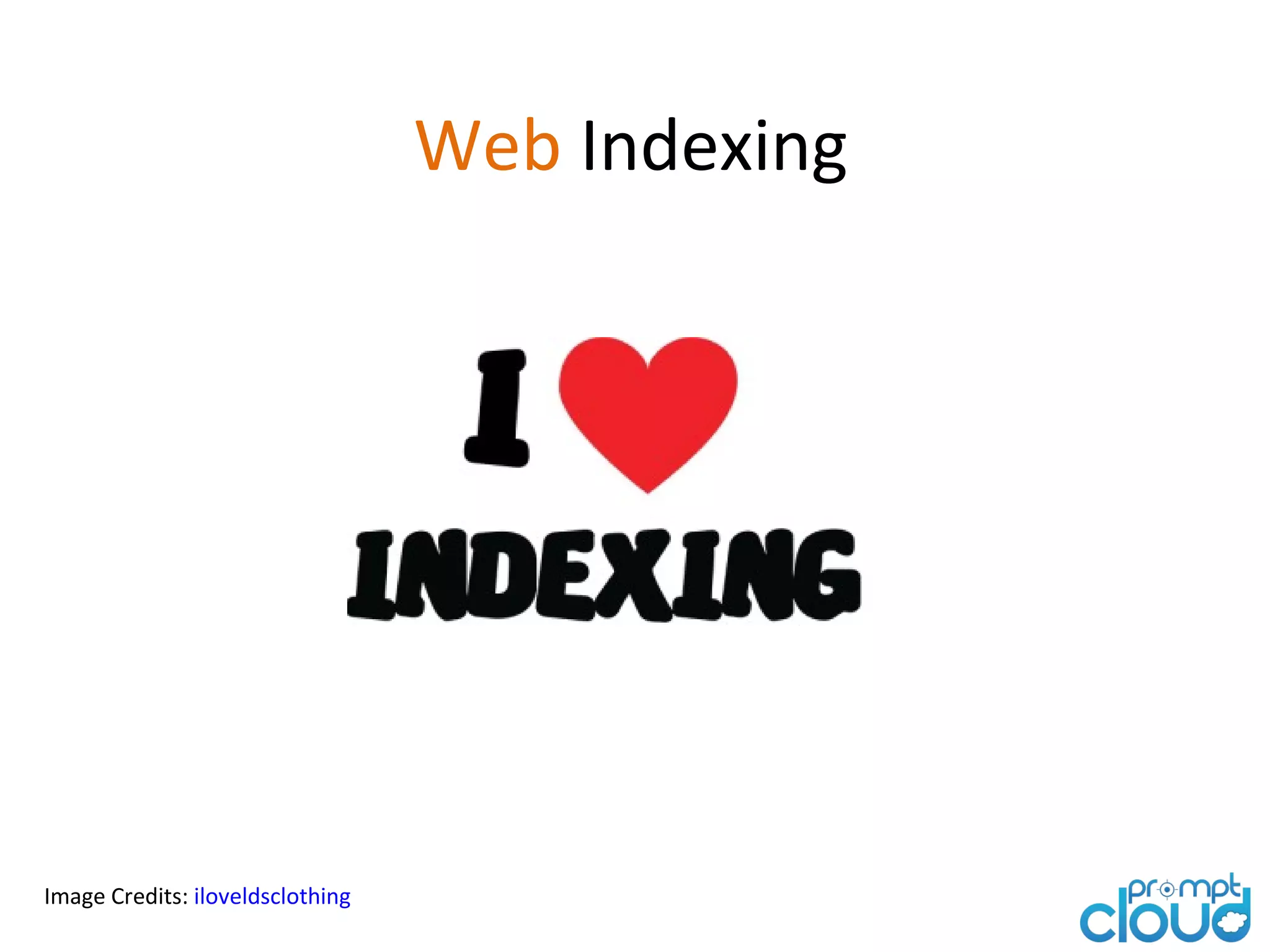
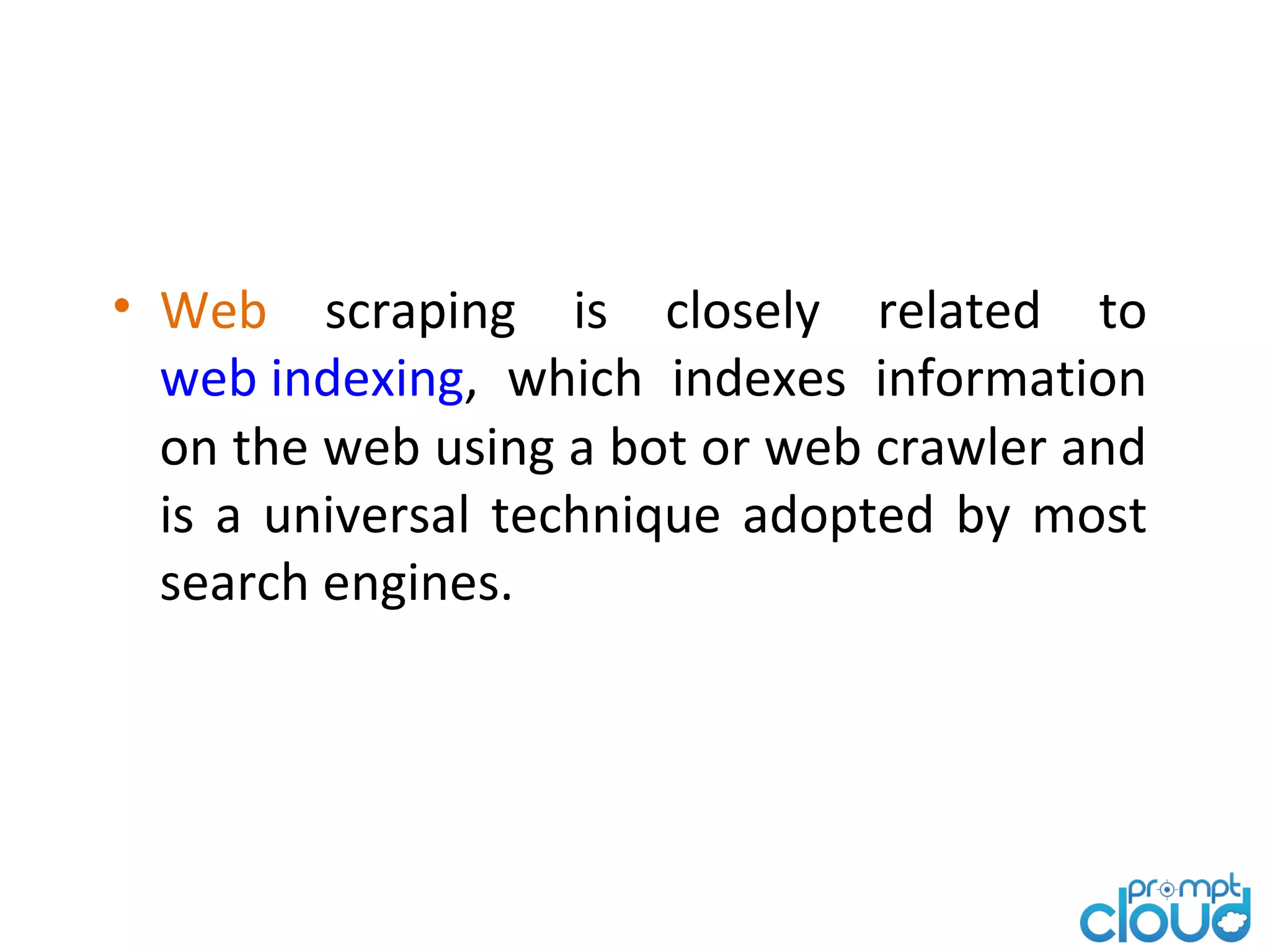
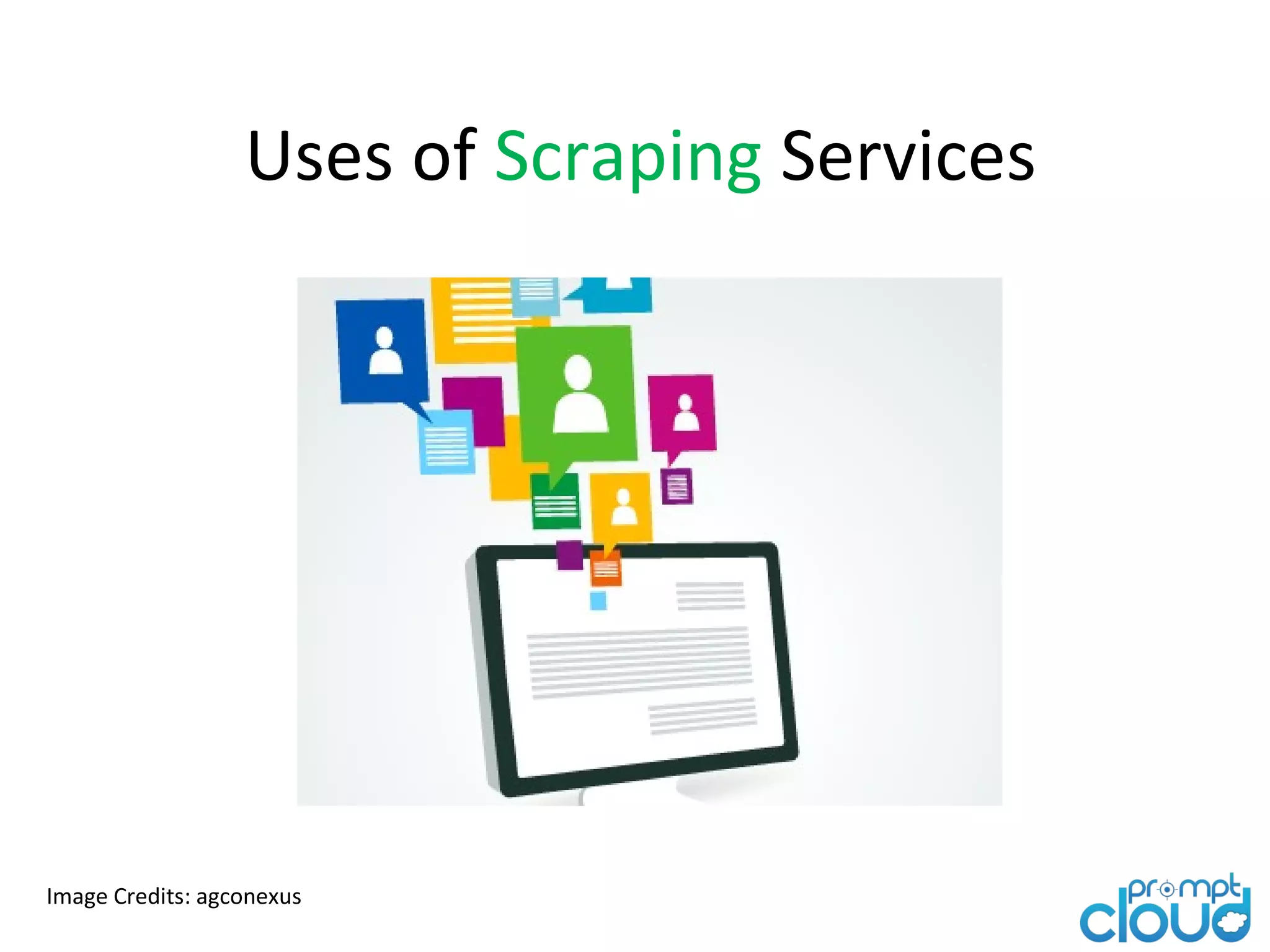
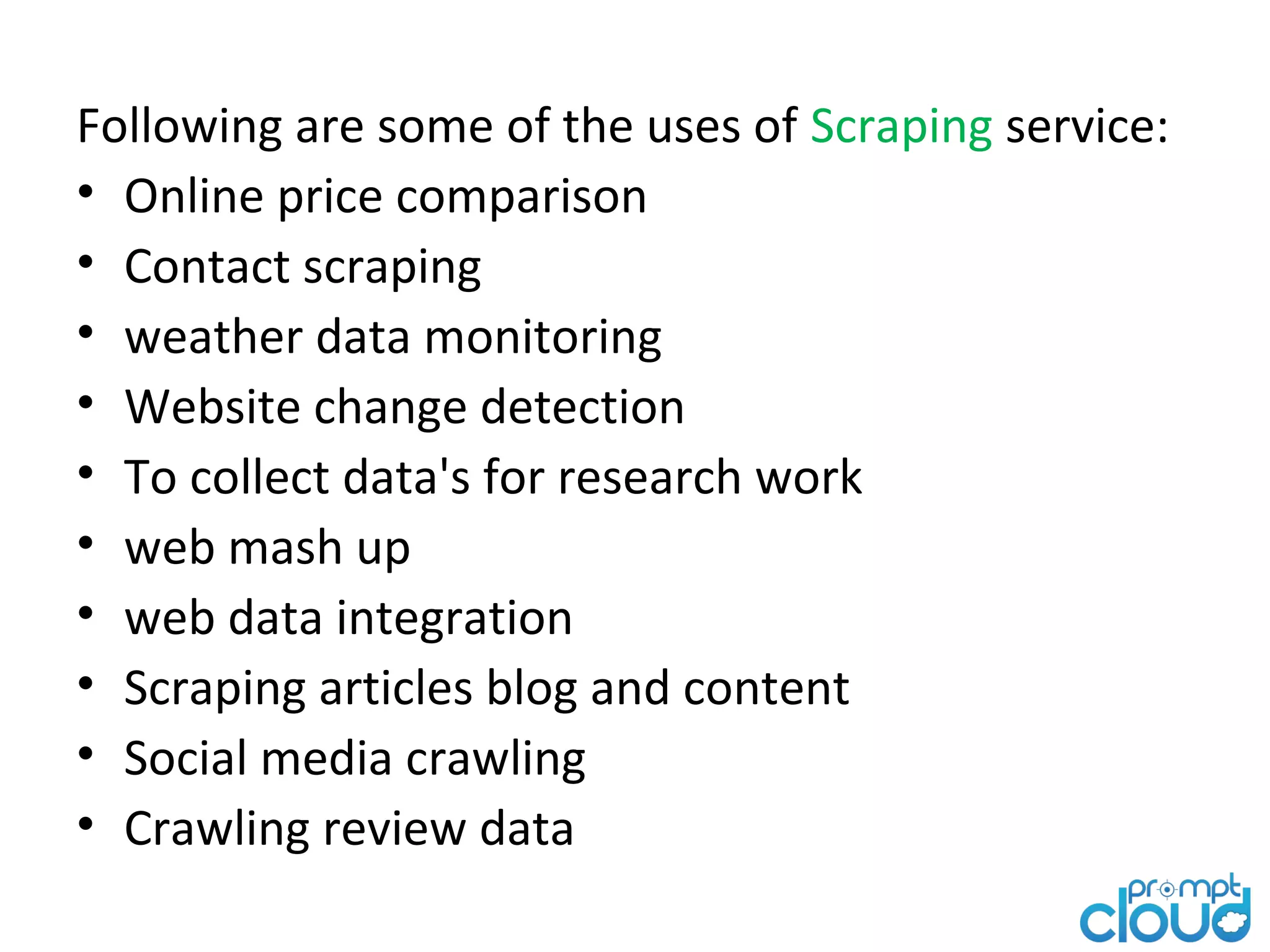

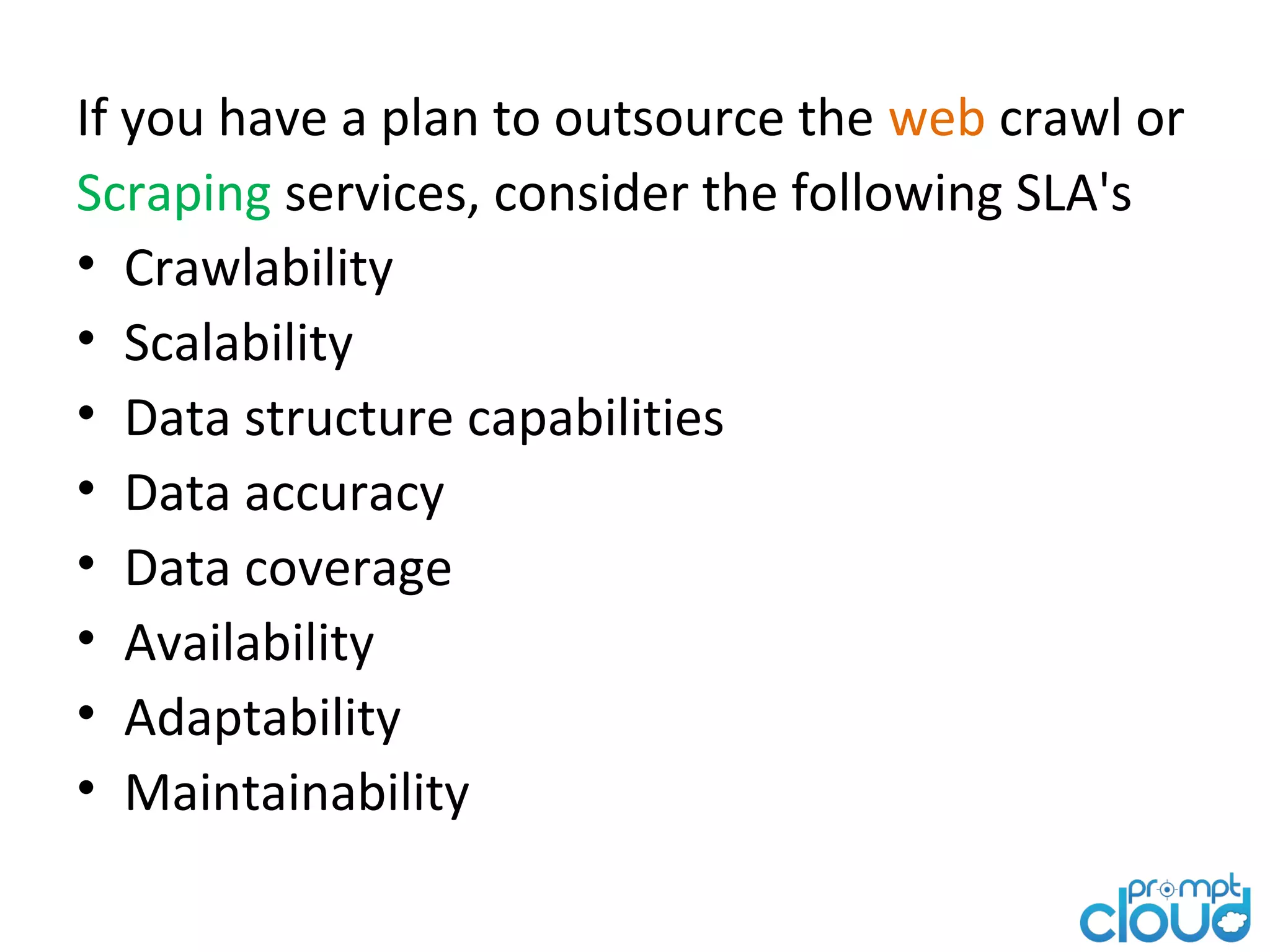
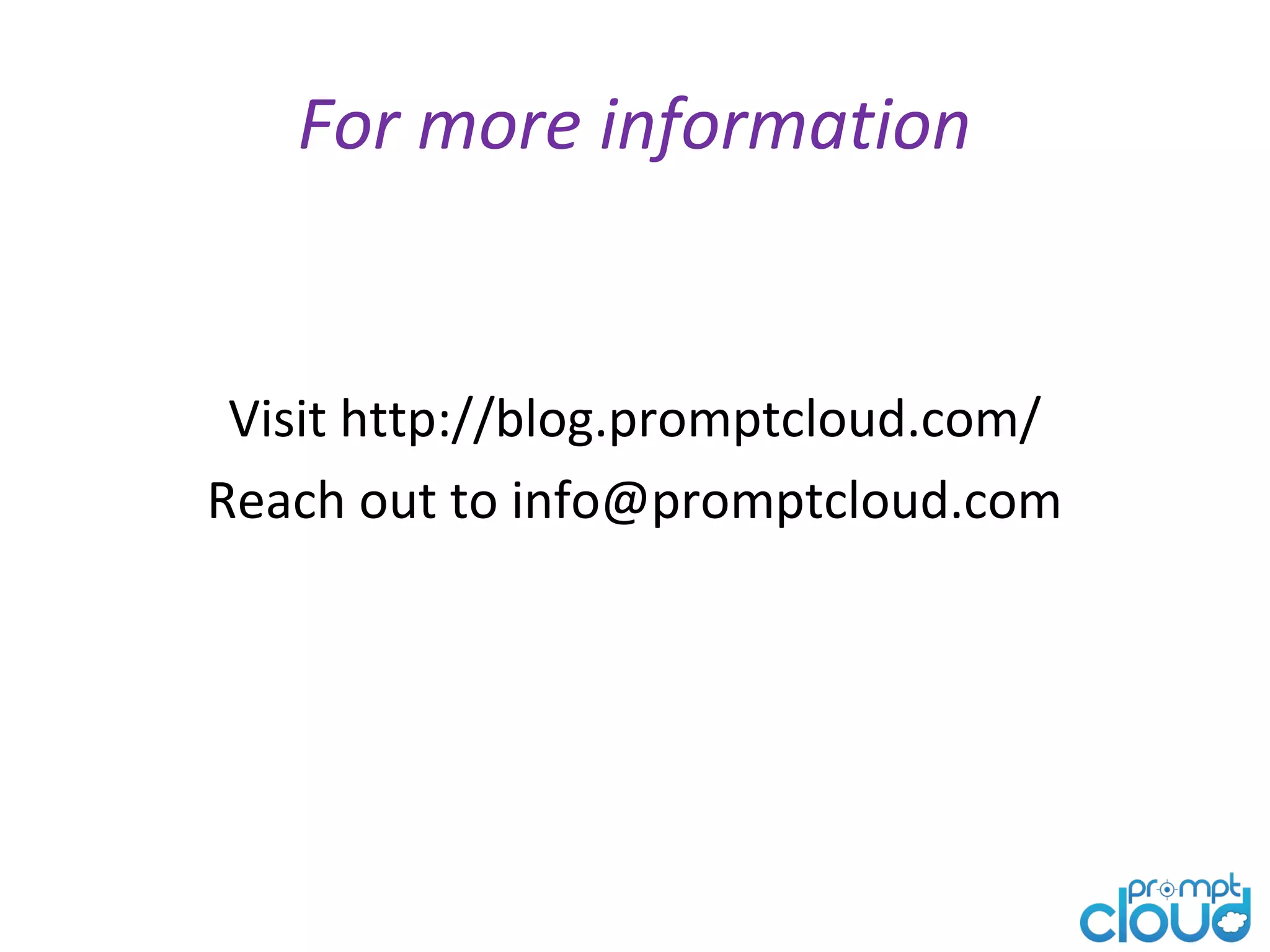


Web scraping is the process of extracting data from web pages and converting it into structured formats like CSV or JSON. It closely relates to web indexing and has applications in price comparison, data monitoring, and social media analysis. When outsourcing web scraping services, it's important to consider factors like data accuracy and scalability.














Definition of Web Scraping, its applications include converting HTML to other formats. Also termed Web Harvesting and Web Data Extraction.
Visual representation of the process involved in web scraping.
Scripts simulate browser actions to request pages from servers, allowing data manipulation and extraction.
Unstructured data is processed and structured into various formats like CSV, XML, XLS, JSON.
Relationship between web scraping and web indexing; both involve using bots for data retrieval.
Various uses including price comparison, data collection for research, and social media crawling.
Key SLA considerations for outsourcing web scraping services like data accuracy and scalability.
Contact and resource information for more insights on web scraping.